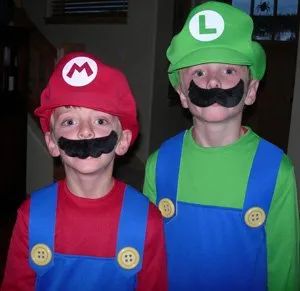
Here it is, Halloween and my house seems to have become one giant candy container. We have candy from school parties, candy from grandparents, leftover candy (because I always overbuy for the all those oodles of trick-or-treaters I don’t get,) and--naturally--each of my two boys came back with their own bag of proudly procured spoils. If like me, you are wondering how much is too much, and how you might curb your kid’s candy consumption, here are a few tips from the American Heart Association.
According to the AHA, the maximum daily dose of “added” sugar should range from 3 teaspoons per day for preschoolers, up to 8 teaspoons per day for teens. By using the term “added sugar,” they are excluding naturally occurring sugars such as fructose (found in fresh fruit) or lactose (from dairy products.) Added sugars include: table sugar, brown sugar, honey, maple syrup, corn syrup, malt syrup, molasses, dextrose, maltose, glucose, and high fructose corn syrup. Just to put these limits into perspective, one 12 ounce can of soda has 8 teaspoons of added sugar. That is the full recommended daily allotment for a teenager, in just one can of soda!
So what are some of the reasons not to exceed these suggested limits? Where do I begin? Here are just a few:
- Too much sugar depresses the immune system.
- Too much sugar can lead to behavior problems such as hyperactivity, shortened attention span, irritability, and decreased learning performance.
- Sugar has little nutritional value but is high in calories. Too much sugar can lead to overweight but undernourished children.
- Too much sugar can cause tooth decay.
- Eating sugary foods leads to cravings for more sugary foods.
You will notice that the problem is not so much the sugar itself, as too much sugar. You don’t need to try to ban sugar from your home altogether. The goal is simply to keep “everything in moderation.” Here are a few tips to help dilute the post-Halloween sugar ingestion:
- Add some protein to their sugar. Eating foods that are high in protein before or with sugary treats will help slow the absorption of the sugar into the blood. This in turn cuts back on the sugar high/low, roller-coaster effect.
- Store the candy out of sight so children don’t have a constant visual reminder.
- Designate one time of day for treats and stick to it.
- Eliminate soda and other sugary drinks. This goes for you too, we are all be better-off without the stuff!
- Don’t start the day with sugar. Eating sugar first thing in the morning sets children up for a mid-morning sugar crash, as well as a full day of sugar cravings.
- Make it a rule that a good tooth brushing should always follow candy consumption. This will not only keep teeth healthy, but can also discourage the “one more piece” mentality.
Maria Montessori believed that a healthy mind, spirit, and body are all equally important for the unified wellness of our children:
“Let us give the child a vision of the whole universe. . . for all things are part of the universe, and are connected with each other to form one whole unity.”
~Dr. Maria Montessori





















